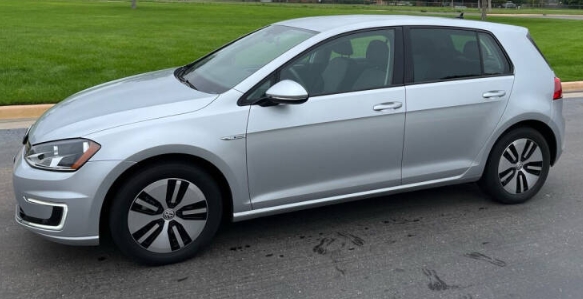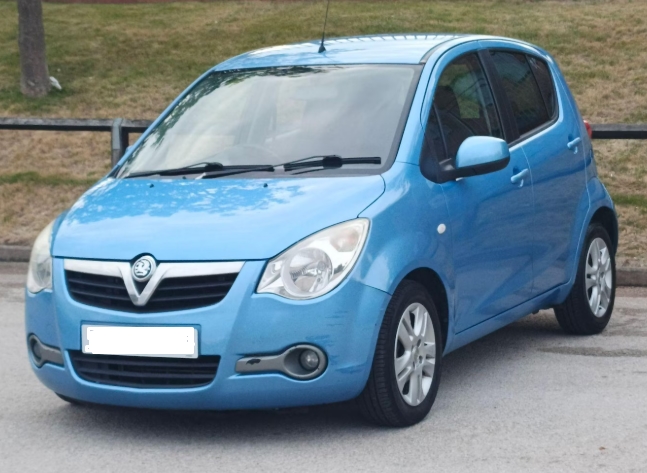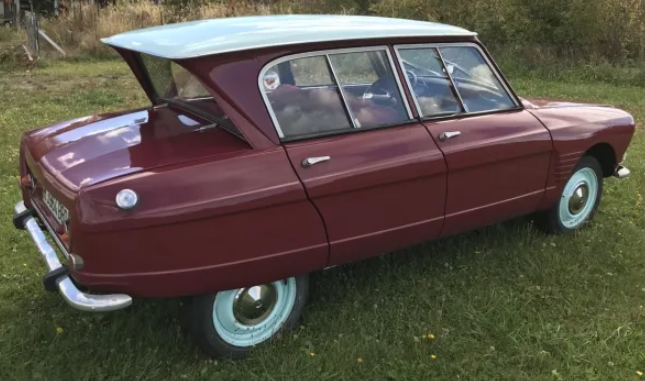Charging Forward: The Evolution of the Volkswagen e-Golf
The Volkswagen Golf has long been a benchmark in the compact car segment, renowned for its practicality, refined driving dynamics, and robust build quality. For decades, it has served as a reliable workhorse and a popular choice for a diverse range of drivers. However, as the automotive industry witnessed a seismic shift towards electrification, Volkswagen, like many other manufacturers, recognized the imperative to adapt. The answer to this challenge arrived in the form of the Volkswagen e-Golf, an electric iteration of their iconic hatchback, conceived to blend familiar Golf virtues with the promise of zero-emission mobility. This article will delve into the fascinating evolution of the Volkswagen e-Golf, tracing its journey from its initial introduction to its eventual discontinuation, highlighting the key model years, trims, and technological advancements that defined its presence in the burgeoning electric vehicle market.
The Genesis: A Glimpse of the Future (2014 Model Year)
The Volkswagen e-Golf made its official debut at the Frankfurt Motor Show in September 2013, with production commencing in March 2014 for the 2014 model year. This initial iteration was built upon the Mk7 Golf platform, a significant redesign that brought a lighter, more rigid chassis and a modern aesthetic. The e-Golf was not a radical departure in terms of its exterior design; rather, it subtly distinguished itself with distinctive aerodynamic wheels, blue accents (a signature of VW’s electric and hybrid vehicles at the time), and a discreet “e-Golf” badge.
The powertrain was the star of the show. The 2014 e-Golf was equipped with a 24.2 kWh lithium-ion battery pack, which powered a 115 horsepower (85 kW) electric motor. This offered a respectable range of approximately 70 miles (EPA estimated) on a single charge. While this figure might seem modest by today’s standards, it was competitive for its time and sufficient for urban commuting and shorter journeys. Charging was achieved via a standard J1772 inlet, and a full charge from a Level 2 charger took around 7-8 hours. DC fast charging was also available, allowing for an 80% charge in roughly 30 minutes, a crucial feature for longer trips.
For its debut, the 2014 e-Golf was offered in a single trim level, simply designated as e-Golf. This trim was reasonably well-equipped, featuring standard amenities such as:
- Automatic climate control
- Heated front seats
- A 5.8-inch touchscreen infotainment system with Bluetooth connectivity
- Keyless access with push-button start
- LED daytime running lights
The interior largely mirrored the standard Golf, offering the same practical layout, comfortable seating, and quality materials that had made the Golf a favorite. The battery pack was located under the rear seats and the trunk floor, leading to a slight reduction in cargo space compared to its gasoline-powered counterparts, a common compromise in early EVs.
.
THIS could come in handy for your auto garage (and everywhere else!):

.
Refinement and Range Extension: The Mk7 Evolution (2015-2016 Model Years)
The 2015 and 2016 model years saw subtle refinements to the e-Golf, building upon the foundation of the initial launch. Volkswagen continued to offer the e-Golf in the single e-Golf trim, but introduced some incremental improvements.
The most significant upgrade for the 2015 model year was a minor increase in battery capacity to 24.2 kWh (though some sources cite 24.2 kWh for both 2014 and 2015, real-world performance and official range figures saw slight improvements). This resulted in a slightly extended EPA estimated range of around 77 miles. Volkswagen also introduced new infotainment options and driver assistance features as available on other Golf models, making the e-Golf more adaptable to different buyer preferences.
The 2016 model year brought a more substantial enhancement: a larger 35.8 kWh battery pack. This proved to be a game-changer, significantly boosting the e-Golf’s practical range. The EPA estimated range jumped to approximately 83 miles, a notable improvement that addressed one of the primary concerns for potential EV buyers – range anxiety. Alongside the battery upgrade, Volkswagen also revised the electric motor’s output, increasing it slightly to 134 horsepower (100 kW). This translated to improved acceleration and a more engaging driving experience.
The e-Golf trim for 2016 continued to offer a comprehensive set of features, but Volkswagen began to stratify the offerings slightly. While still primarily a single trim, optional packages and standalone features allowed for greater personalization. Common additions included:
- A larger 6.5-inch touchscreen infotainment system with satellite navigation
- Volkswagen Car-Net app connectivity for remote vehicle monitoring and charging control
- Advanced driver assistance systems like Adaptive Cruise Control (ACC), Forward Collision Warning with Autonomous Emergency Braking, and Parking Assist.
The exterior received minor tweaks as well, including updated wheel designs and the availability of new exterior paint colors. The LED lighting signature also became more prominent, further distinguishing the e-Golf from its combustion-engine siblings.
The Apex of the Mk7: Enhanced Range and Premium Features (2017-2019 Model Years)
The period between 2017 and 2019 marked the zenith of the Mk7 e-Golf’s development. Volkswagen recognized the increasing competition in the EV space and aimed to make the e-Golf a more compelling proposition. This era saw the introduction of distinct trim levels, catering to a wider spectrum of budgets and desires.
For the 2017 model year, the e-Golf was offered in two primary trim levels: SE and SEL Premium.
The e-Golf SE served as the entry-level model, still providing a solid foundation of electric mobility. It typically included:
- A 6.5-inch touchscreen infotainment system with Apple CarPlay and Android Auto integration
- Heated front seats
- LED headlights and taillights
- Rearview camera
- Keyless access with push-button start
The e-Golf SEL Premium represented the higher-tier offering, building upon the SE with a more luxurious and technologically advanced package:
- Larger 9.2-inch Discover Pro touchscreen infotainment system with navigation
- Digital Cockpit (a fully digital instrument cluster)
- Adaptive Cruise Control (ACC)
- Front Assist with Pedestrian Monitoring
- Blind Spot Monitor with Rear Traffic Alert
- Lane Assist
- Power tilting and sliding sunroof
Both the SE and SEL Premium models continued to utilize the 35.8 kWh battery pack, providing an EPA estimated range of around 125 miles for the 2017 model year, a significant leap from its initial offerings. The 134 horsepower electric motor remained, delivering brisk acceleration for city driving and confident highway merging.
The 2018 model year saw further refinements to the e-Golf. The battery capacity was again increased to 35.8 kWh, and crucially, VW announced an updated EPA estimated range of 125 miles. This was a significant improvement, bringing the e-Golf more in line with some of its newer EV competitors. The electric motor’s output remained at 134 horsepower.
The trim structure largely carried over:
- e-Golf SE: Continued to offer a well-equipped base model with features like the 6.5-inch touchscreen, Apple CarPlay/Android Auto, LED lighting, and heated seats.
- e-Golf SEL Premium: Enhanced with features like the 9.2-inch Discover Pro infotainment, Digital Cockpit, and a suite of advanced driver-assistance systems.
Minor styling updates were also present, with subtle revisions to the front and rear fascias, and new wheel designs.
The 2019 model year represented the final iteration of the Mk7 e-Golf before its eventual discontinuation. It largely retained the specifications and trim levels of the 2018 model. The e-Golf SE and e-Golf SEL Premium trims continued to offer the 125-mile range and 134 horsepower powertrain. The focus for this final year was on maximizing the appeal of the existing package, ensuring it remained a competitive and desirable option for buyers seeking a practical and well-built electric hatchback. Volkswagen continued to offer optional packages that allowed customers to further customize their e-Golf, adding features like premium audio systems or enhanced safety technologies.
The End of an Era: Transition to the ID. Family (2020 Model Year and Beyond)
Despite its consistent improvements and dedicated following, the Volkswagen e-Golf’s production run officially concluded with the 2019 model year in most markets, with some limited availability extending into 2020 in certain regions. This decision was a strategic one, as Volkswagen was embarking on a far more ambitious and comprehensive electrification strategy with its dedicated ID. family of electric vehicles.
The ID.3, launched in 2019 (for the 2020 model year in Europe), and subsequently the ID.4 SUV, represented a fundamental shift. These vehicles were built on a dedicated electric-only platform (MEB) and were designed from the ground up to be electric, offering significantly greater range, more advanced technology, and a distinct design language.
The e-Golf, while a pioneering effort and a successful bridge to electrification, was fundamentally an adaptation of an existing internal combustion engine platform. The inherent limitations of this approach, particularly regarding battery packaging and interior space, became more apparent as newer, purpose-built EVs emerged.
Legacy and Impact
The Volkswagen e-Golf played a crucial role in the broader adoption of electric vehicles. It demonstrated that a mainstream manufacturer could successfully translate the practicality, quality, and driving pleasure of a beloved model into an electric format. It appealed to a wide audience, from environmentally conscious commuters to those simply seeking a refined and efficient daily driver.
Key contributions of the e-Golf include:
- Familiarity and Trust: By leveraging the Golf nameplate, Volkswagen eased the transition for many consumers who might have been hesitant to adopt a completely new and unfamiliar EV.
- Practicality: It retained the Golf’s renowned practicality with its hatchback versatility and comfortable interior, making it a viable option for families and individuals.
- Technological Advancement: Each model year saw gradual but significant improvements in battery technology, range, and charging capabilities, contributing to the overall evolution of EV standards.
- Accessibility: While not the cheapest EV on the market, the e-Golf offered a compelling value proposition, especially in its higher trim levels, making electric mobility more accessible to a broader demographic.
In retrospect, the Volkswagen e-Golf was a vital stepping stone. It was a testament to Volkswagen’s commitment to a sustainable future, proving that electric vehicles could be more than just niche products. While it has now been succeeded by the more advanced and purpose-built ID. range, the e-Golf’s journey from a cautious entry into the electric realm to a refined and capable contender leaves an indelible mark on the history of automotive electrification. It was a quiet revolution, charging forward, one mile at a time, paving the way for the electric future we are now actively inhabiting.







